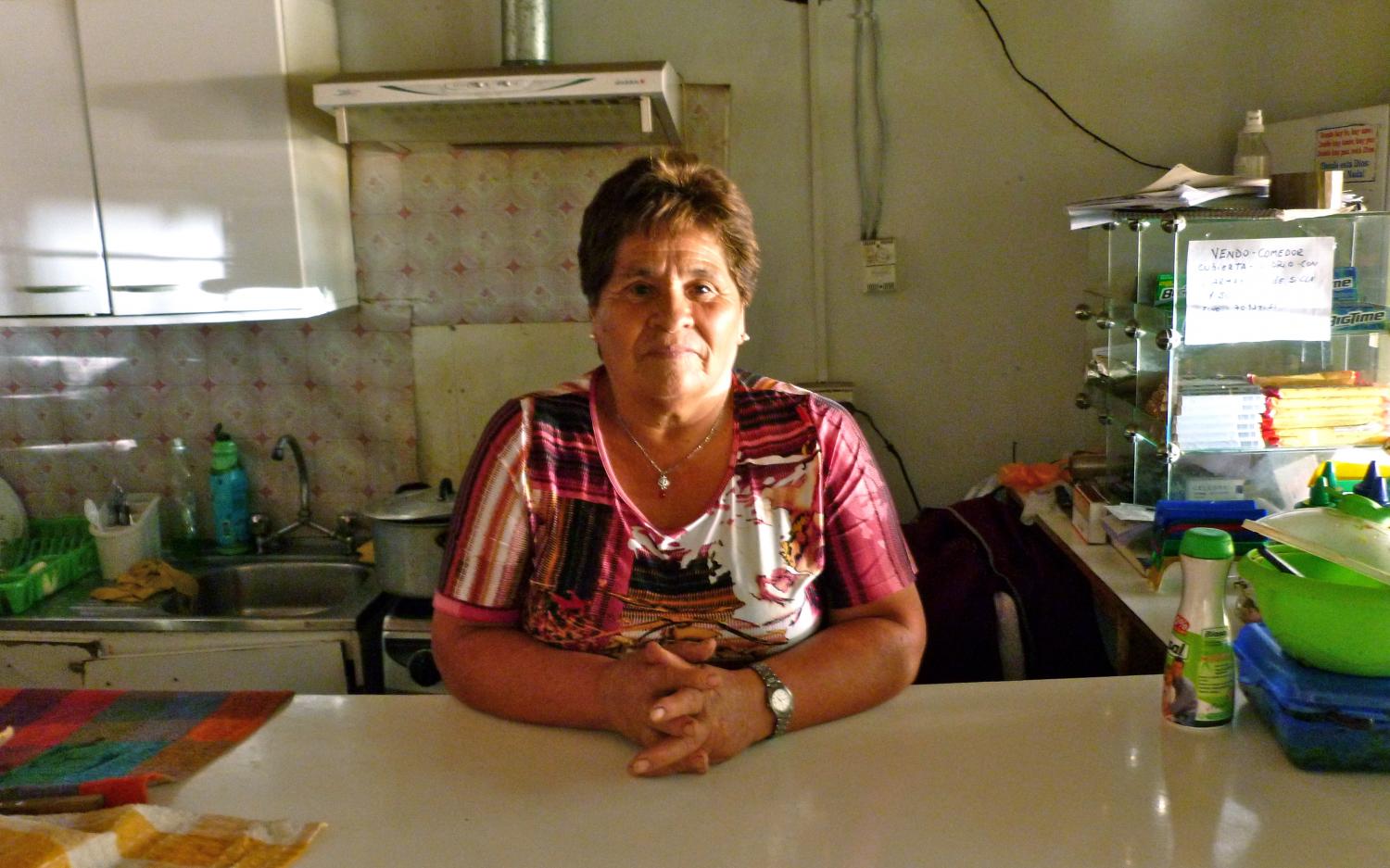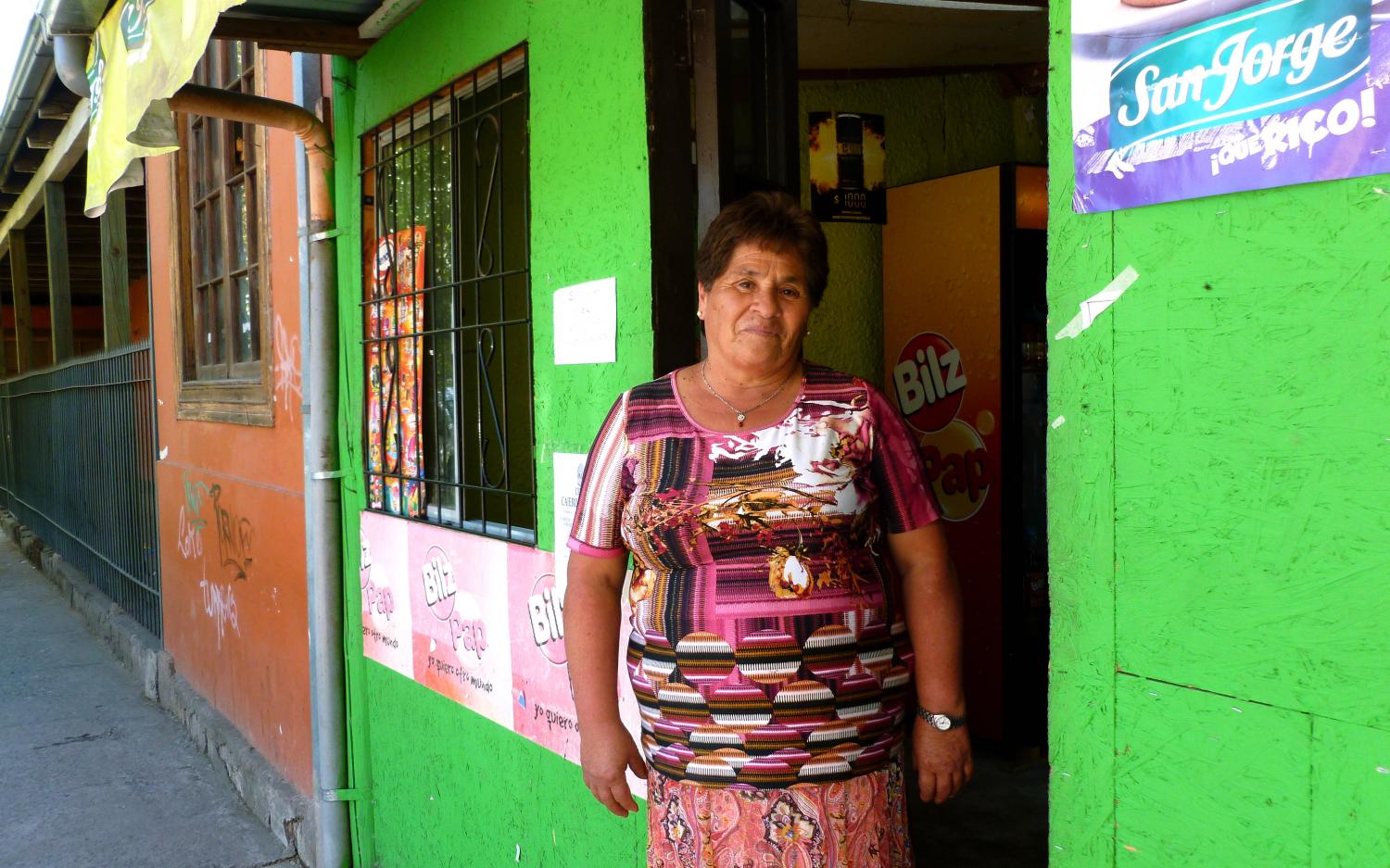

In Rauco, Chile, a small rural town a few hours south of Santiago, Irma and I sit at a small fold out table at Irma’s Fuente de soda, a small restaurant no bigger than the average American bedroom. Irma is 60, a mother and a grandmother, but she still wakes up seven days a week to start cooking by 8:30 am, open her business by 11a.m. and not close until 11p.m.
“We have to open every day,” she says. “If I don’t open, even just for a day, everyone asks me ‘hey, what happened?’”
Then she tells me a little bit about herself.
“I’m from the compo,” Irma explains. “My parents raised cattle.”
Irma grew up in a very poor household and did not have access to even basic education. In her lifetime Chile's economic situation has changed dramatically. When Irma was 30 years old, in 1982, Chile’s poverty rate was 41 to 47%, more than double what it is today (15.1%).
“One day I came into town, I passed by this building,” Irma says pointing to her concrete floors. “I said to myself, Irma, why don’t you ask if they’ll rent it to you.”
That was almost 10 years ago, when Irma first began taking out microloans from an early version of Kiva’s Chilean field partner Fondo Esperanza. Today, it is the largest MFI in Chile, with 47 branches throughout the country.
Having repaid all her loans on time for two consecutive years, Irma was eventually recommended to a commercial bank, where she could receive a larger sum — 500,000 Pesos, or US$1,000, which she used to help her purchase the building outright.

Irma at Soda Fountain
Today, Irma is the president for her local community bank and her soda fountain employs three other women, all around her age. Their sun-soaked skin, ashen hair, gapped smiles and toned biceps remind me that for many people around the world, this is what retirement looks like.
A recent study by Central Latin America for Rural Development aimed to paint a more accurate portrait of Chilean poverty. By observing each sector of the country, the study found that more than half of Chile’s 500,000 poor are concentrated in 10% of the country’s rural areas.
Curico is listed as being one of these more notably impoverished areas. Just three hours outside Santiago, surrounded by orchards and farmland, Curico’s tin-roof houses and unpaved roads are a testament to Chilean rural-poverty. As in many rural areas in the country, work here is seasonal and there is limited access to social services.
While Chile may be considered a nearly developed country with the fastest growing economy in Latin America, much of its progress has been at the cost of socioeconomic equality.
Since colonial times, the fertile land and precious metals that grant this country such remarkable wealth have remained in the hands of a few.

statue of the "Farmer Family", Curico main plaza
For example: In the early 1990s, commercial farmers cultivated 61% of Chile’s farmland, while the poorest farmers (like Irma’s family) -- who were three times more numerous -- cultivated only 2% of farm area. In this case, landlessness and poverty go hand in hand.
“I love my business” says Irma. “This is where I feel comfortable. I thank god everyday that he gave me this opportunity.”
PREVIOUS ARTICLE
Village Bank : an exemple of women empowerment →NEXT ARTICLE
Bank of Bob is climbing the charts -- thanks to YOU! →













